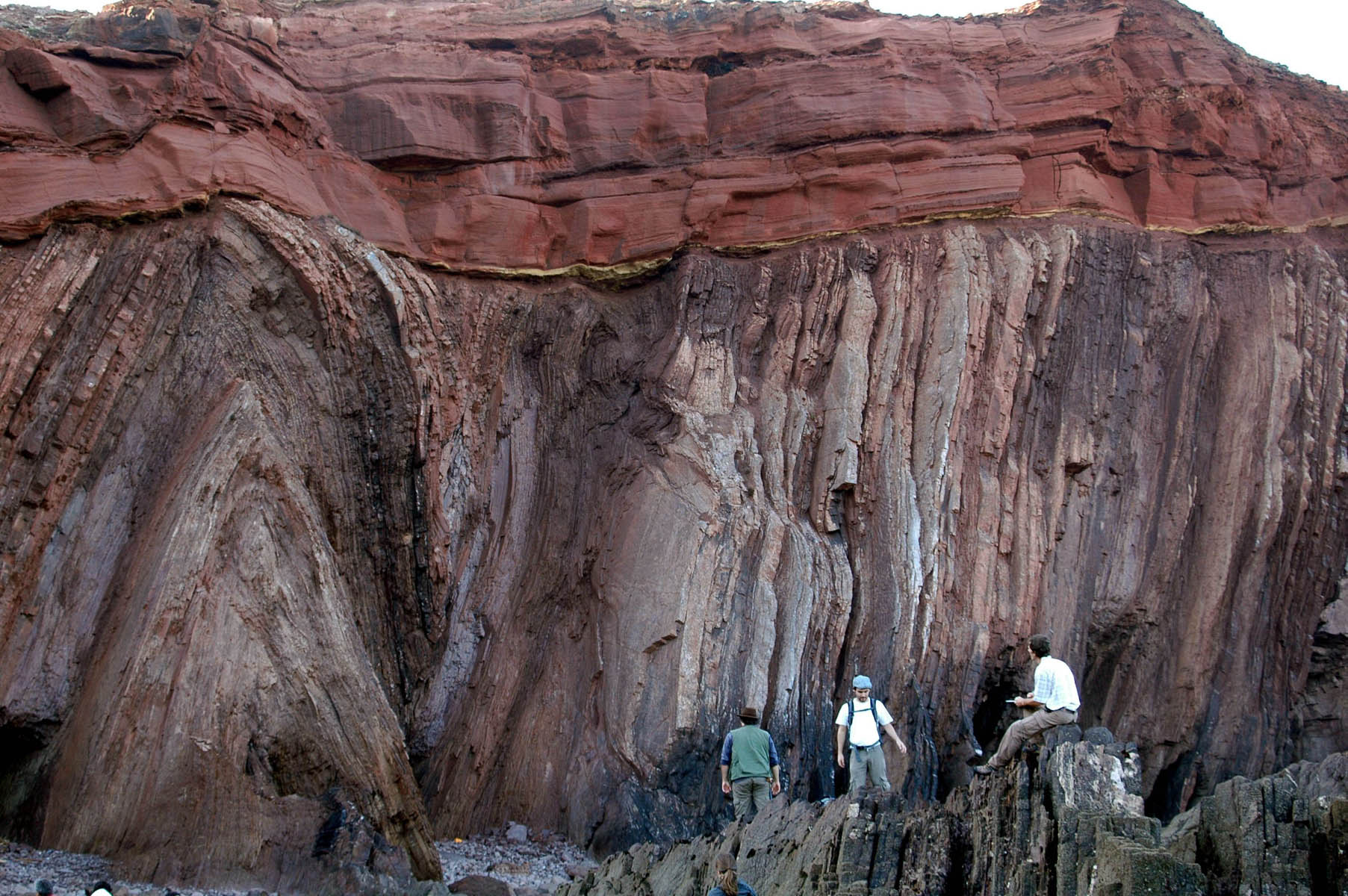My main fields of expertise are Structural Geology and Tectonics.
During my PhD …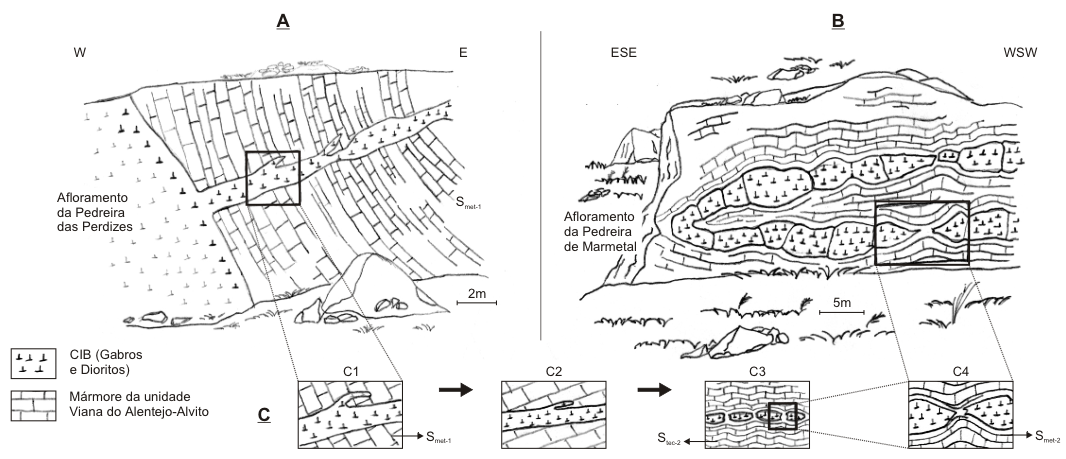

… I’ve studied the Variscan orogen in SW Iberia, specifically the late Palaeozoic tectonic inversion of the Rheic (passive) continental margin, which is thought to have implied subduction and obduction along the so-called Ossa Morena Zone (OMZ) meridional domains (presently outcropping in SW Portugal), eventually leading to continental collision (SW Iberian Variscan orogen). My work involved mapping of high grade gneiss terranes, and the study of HP exhumed rocks, coupled with analogue modelling of sheath folds. Here are the links for my thesis (in Portuguese) and to the 3 papers related to my PhD:
- Sheath folds #1 – Has Ramberg AGU memoir paper
- Sheath folds#2 – Structural Geology paper
- Varican orogen in SW Iberia – Tectonics paper


More recently I have also worked on …

… The (neo)tectonics of the offshore SW Iberia, along the Eurasia-Nubia plate boundary (NE Atlantic), more specifically, on trying to unravel the seismogenic and tsunamigenic sources (i.e., main active tectonic structures) responsible for the important historical and instrumental seismicity in this area, in which the 1755 great Lisbon Earthquake occurred. Within this research line I’ve pursued the following main approaches:
-
Geodynamic modelling of active transcurrent (strike-slip) fault systems:
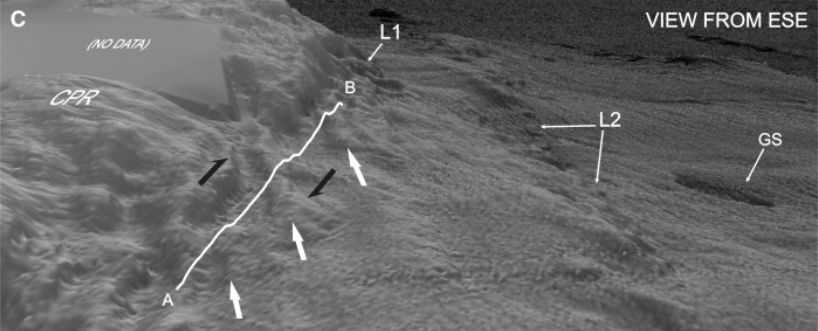
 Analogue modelling and tectonic interpretation of 200km long bathymetric lineaments in the Gulf of Cadiz sea floor as major active strike-slip faults (the so called SWIM faults) – Marine Geology paper.
Analogue modelling and tectonic interpretation of 200km long bathymetric lineaments in the Gulf of Cadiz sea floor as major active strike-slip faults (the so called SWIM faults) – Marine Geology paper.
-
Geodynamic modelling of thrust-wrench fault interference:
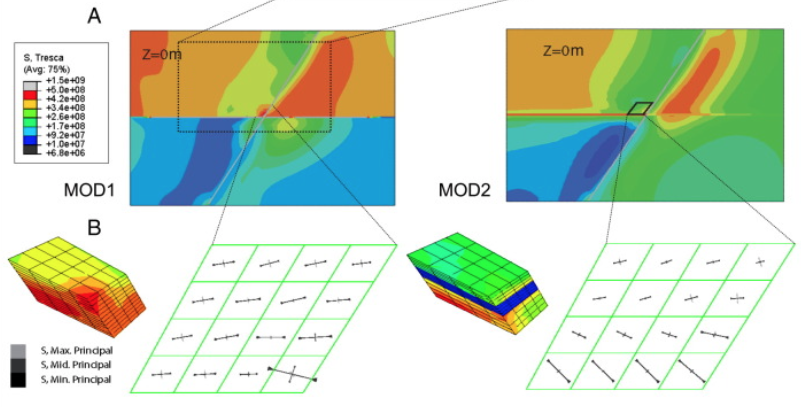 a) Coupled analogue and numerical modelling of the active fault interference between major active strike-slip faults and thrusts in the Gulf of Cadiz – Tectonophysics paper.
a) Coupled analogue and numerical modelling of the active fault interference between major active strike-slip faults and thrusts in the Gulf of Cadiz – Tectonophysics paper.
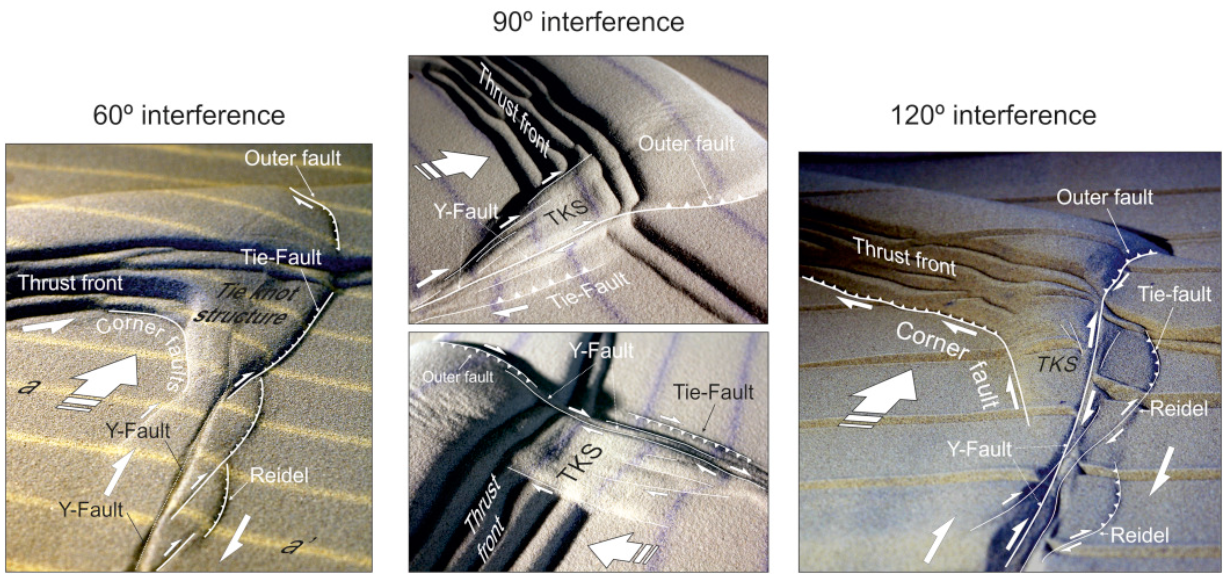 b) Analogue modelling of general (different angle) interference between active thrust and strike-slip faults – Journal of Structural Geology paper.
b) Analogue modelling of general (different angle) interference between active thrust and strike-slip faults – Journal of Structural Geology paper.
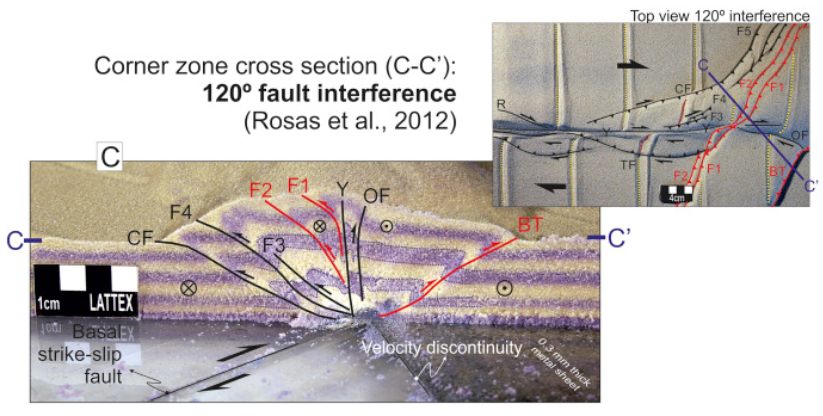 c) Seismogenic potential of active fault interference in the Gulf of Cadiz (offshore SW Iberia, NE Atlantic) for the generation of high and very high magnitude earthquakes in the region, including the 1755 Great Lisbon Earthquake. – Book chapter, AGU, Geophysical Monograph Series, Plate boundaries and natural hazards.
c) Seismogenic potential of active fault interference in the Gulf of Cadiz (offshore SW Iberia, NE Atlantic) for the generation of high and very high magnitude earthquakes in the region, including the 1755 Great Lisbon Earthquake. – Book chapter, AGU, Geophysical Monograph Series, Plate boundaries and natural hazards.
-
Subduction initiation along the Wester Iberian Margin (WIM)
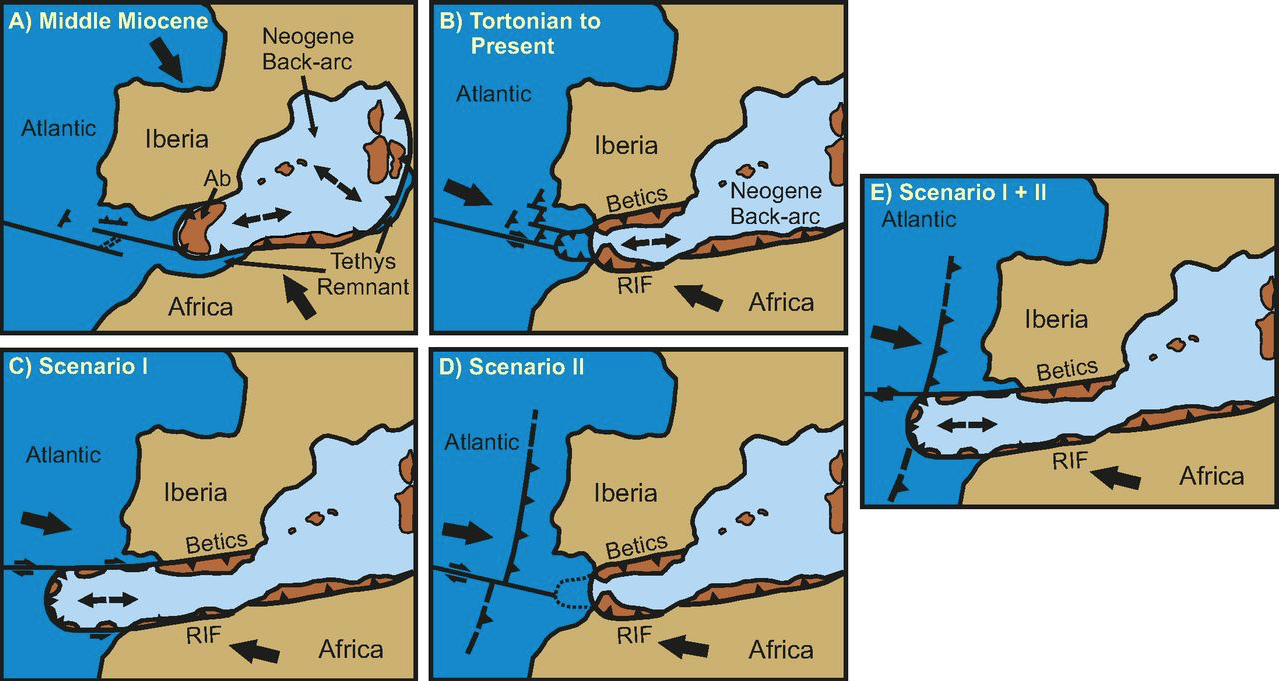 Is a new subduction zone being formed along the WIM, transforming the Atlantic passive margin into an active one? Is this being induced by the previous, waning(?), Gibraltar subduction zone in the Gulf of Cadiz? Work led by former PhD student J. Duarte. – Geology paper.
Is a new subduction zone being formed along the WIM, transforming the Atlantic passive margin into an active one? Is this being induced by the previous, waning(?), Gibraltar subduction zone in the Gulf of Cadiz? Work led by former PhD student J. Duarte. – Geology paper.
My present research …
… is mainly focused on using analogue and numerical geodynamic modelling to understand the dynamics of different tectonic/geodynamic problems at different scales, such as:
-
Subduction initiation:
1. Polarity-reversal subduction initiation (2D)
A buoyant oceanic plateau atop the original subducting plate arrives to the subduction trench, obstructing it (resisting subduction), and triggering a new subduction zone in the opposite direction (opposite polarity). Note that the model is NOT forced externally by any imposed velocity BCs, but rather, it is driven exclusively by the force equilibrium between the negative buoyancy of the subducting slab, and the viscous resisting forces in the mantle. This work was led by former PhD student Jaime Almeida – EPSL paper.

2. Polarity-reversal subduction initiation (3D)
The video above (be patient in takes a few seconds to start) shows polarity reversal subduction initiation occurring, also in a dynamic self consistent model (i.e., in the absence of any external forcing), but now at 3D. Note that the contribution of the negative buoyancy of the slab in the 3rd dimension is now taken into account, as well as the feed-back effect of the flow in the mantle. This work was led by former PhD student Jaime Almeida – Commun Earth Environ paper.
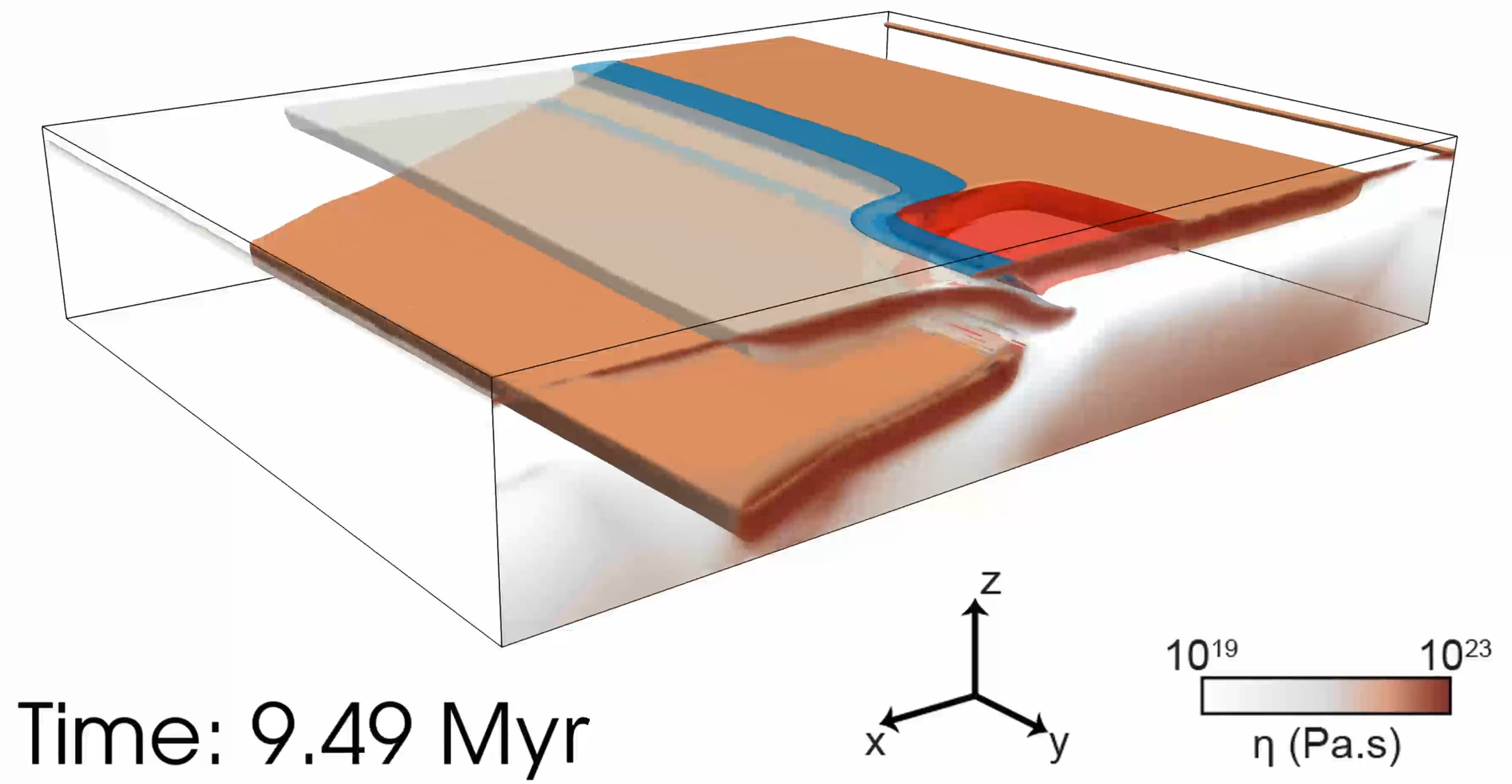
-
Continental rifting:
1. Numerical modelling of crustal continental rift, to understand the influence of differently assumed crustal rheological configurations on the development of double grabens during early-rift evolution.
Investigated variables also included the existence vs. absence of crustal weak seeds (crustal weak anisotropies such as pre-existent faults or magmatic chambers), in different numbers and at different distances from each other. This work was led by former PhD students Magda Oliveira and Afonso Gomes – Tectonophysics paper
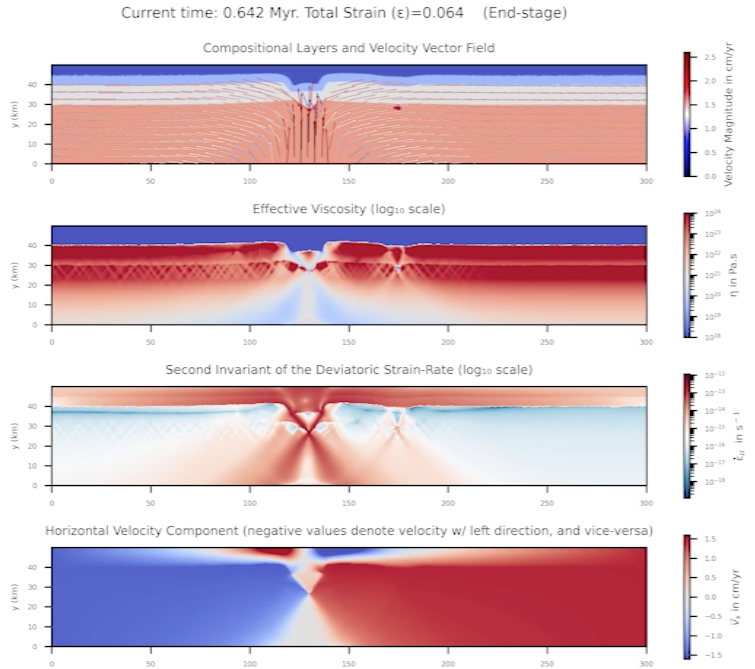
2. Analogue modelling of continental crust extension, focusing on the investigation of crustal rheology on the type of fault distribution pattern (degree of fault delocalisation) affecting the brittle upper crust as a result.
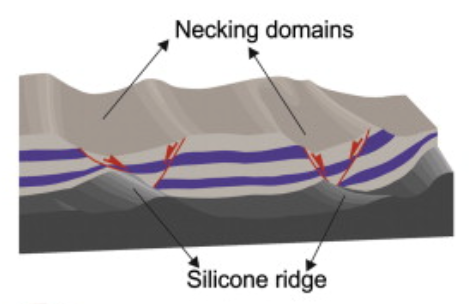 a) These Analogue modelling experiments were conceived to investigate the influence of the thickness of a weak (viscous) middle crust layer, on the resulting delocalisation fault distribution pattern along the overlying brittle layer (elastic upper crust). This work was led by former MSc student Ruth Keppler – Tectonophysics paper.
a) These Analogue modelling experiments were conceived to investigate the influence of the thickness of a weak (viscous) middle crust layer, on the resulting delocalisation fault distribution pattern along the overlying brittle layer (elastic upper crust). This work was led by former MSc student Ruth Keppler – Tectonophysics paper.
-
Thrusting
Analogue modelling study of passive deformation of a weak hanging wall (allochthonous unit) while its being emplaced above a rigid footwall with different thrust ramp geometries (flat-ramp-flat vs. concave-convex geometry):
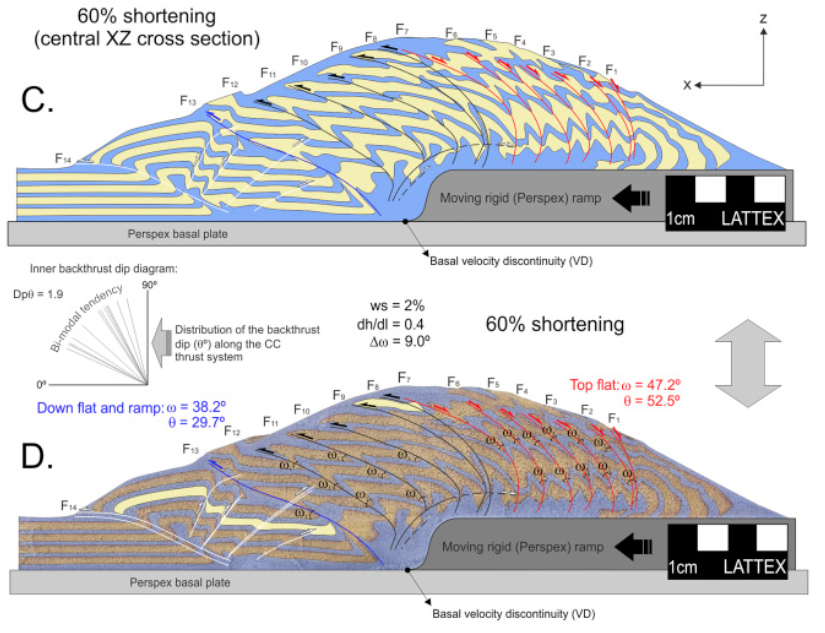
Details of this work can be found in this Journal of Structural Geology paper
-
Strike-slip faulting across morph-rheological obstacles
Analogue modelling of the tectonic interference between active strike-slip faults systems and morph-rheological barriers (obstacles):
Video depicts a top view of this interference in models striped of their cover (top) sand layer: while all strike-slip Riedel structures develop and coalesce in the sand, the black silicone body changes from circular to elliptic, with increasing eccentricity and with its shear plane rotating to the (horizontal) shear plane.
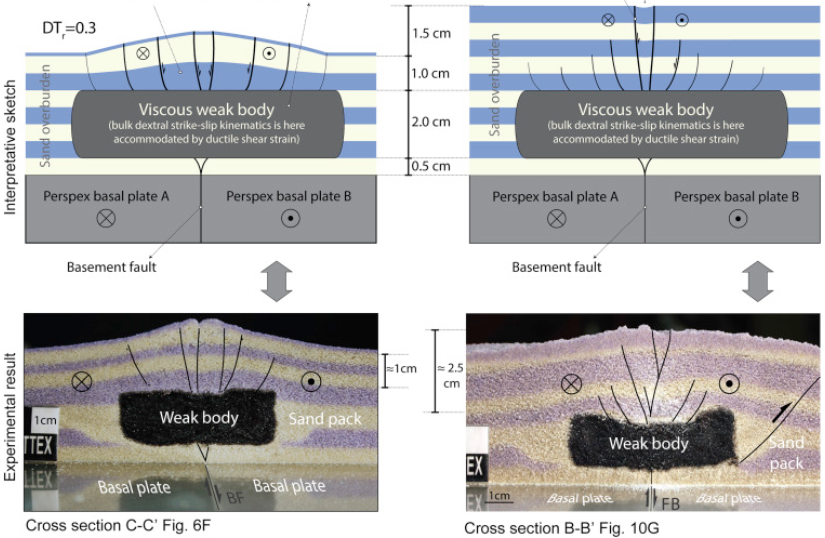
Work led by former MSc student Afonso Gomes – see JSG paper for details.
